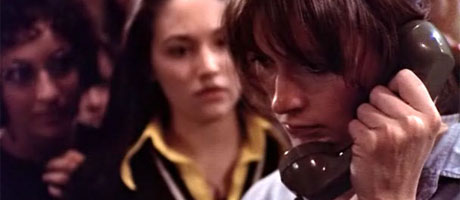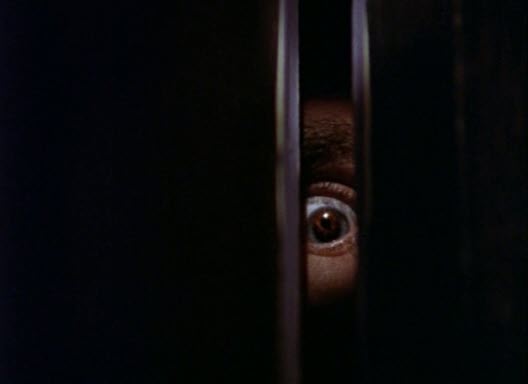Black Christmas (1974)
I love the awkward juxtaposition of setting a horror film during the Christmas holiday season. Black Christmas uses this to its advantage by creating several awkward and haunting moments. There’s a scene in the film where a sorority girl is being murdered upstairs while children sing carols downstairs at the front door. It’s disturbing and uncomfortable to watch, which is what makes horror movies great.

In Black Christmas, a sorority is under attack by a mysterious and creepy killer (“Billy”) who taunts the sisters with obscene, threatening, and occasionally unintelligible phone calls. With a body count of seven the film is often referred to as the first slasher film, but it doesn’t feel like one. The film’s pace is slow (like, 1970s-horror slow) and spends more time building tension than spilling blood. In fact, of those seven murders, one takes place within the first five minutes and four take place in the last five, with roughly an hour and a half between killings for viewers to ponder “who is the killer” and, more importantly, “who’s gonna get it next?”
I’m about to spoil the ending to a 40-year-old movie in the next paragraph. You have been warned.
The twist is that the calls are coming from inside the house. Black Christmas, released five years before When a Stranger Calls, appears to be the first full-length movie to use this gimmick, based on the urban legend that dates back to the 1960s. Here, the gimmick is milked for all its worth with police listening in on a remote handset as a phone linesman rushes down rows of clickity mechanical switches, manually searching for the one that will reveal where the calls are originating from.
Unlike modern horror films in which writers, directors, and perhaps audiences need to know more about the killer’s background, vintage horror wasn’t always that way. While Rob Zombie’s remake of Halloween dedicated much of the film to Michael Myers’ childhood, the original attempted to do the opposite by stripping all personality away from the killer (even simply referring to him as “The Shape”). And while the 2006 remake of Black Christmas apparently delves into the killer’s background, the original does not; in fact, other than his hands in a few POV shots and one creepy shot of his eyeball, we don’t see the killer at all. We don’t know his motivation, his background, or his mindset. We don’t know why Billy has ended up in the attic of a sorority house, why he is making crank phone calls in different voices, or why he is killing these young ladies. All we know is that he is, and in this film, it’s enough. And part of that is what makes the film scary — that you could get killed by a random guy who decides to move into your attic and barrage you with crank phone calls for no reason other than the fact that he’s crazy.
Plot wise, my biggest problem with Black Christmas was with the shoddy police work. Our killer’s first victim ends up with a plastic bag wrapped around her head and placed in a rocking chair next to a window in the attic. We (the audience) can clearly see her from the street — why can’t the police? And why didn’t they search the attic? I also didn’t understand how Billy could yell into the phone repeatedly during his calls and yet no one inside the house could hear his voice coming from the attic. Unless you can’t hear someone yelling in your attic, in which case attics just got a lot scarier.
Black Christmas was rated R for violence and language, although today I suspect the violence would barely get it a PG-13 rating. The language however is strong — occasionally, shockingly so.
The influence Black Christmas had on films like Halloween and Friday the 13th and countless others is obvious and undeniable. While not without its flaws, it’s obvious that this film set the bar for (and perhaps invented) the genre.
(This review is a part of my month-long October 2014 A-Z Horror Reviews.)
